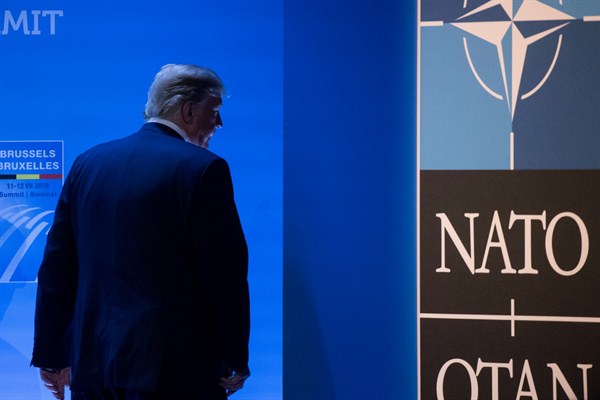During the 2016 U.S. presidential campaign, Donald Trump said that if elected, he might withdraw the United States from NATO largely because, in his words, the other member states “aren’t paying their bills.” At the time, this didn’t receive as much attention as Trump’s other statements on the campaign trail. Candidate Trump said so many peculiar, often offensive things that this one got lost in the shuffle, and few people at the time thought that he stood a chance of winning the election anyway. Even his supporters assumed that if he did, he would temper his more extreme positions once he learned more about U.S. foreign and security policy.
Now, two years later, Trump as president continues to sow doubts about America’s commitment to the Western alliance, reportedly joking about withdrawing from NATO with the leader of Sweden and later questioning the wisdom of Article 5 of the NATO treaty, which states that an attack on one member is an attack on all. For Trump, the crux of the issue is the failure of many NATO members to move toward the goal of spending 2 percent of their GDP on defense, which they have pledged to do by 2024.
Trump is not the first American president frustrated by the unwillingness of many NATO member states to increase their defense spending, but this issue is simply the most visible sign of deeper problems in the alliance. While the idea of security cooperation among Western democracies remains as important now as it was when NATO was created in 1949, the organization’s structure has not fundamentally changed since then, even though the strategic and political environments have shifted dramatically. Over time, this ossification has become less and less tolerable.

